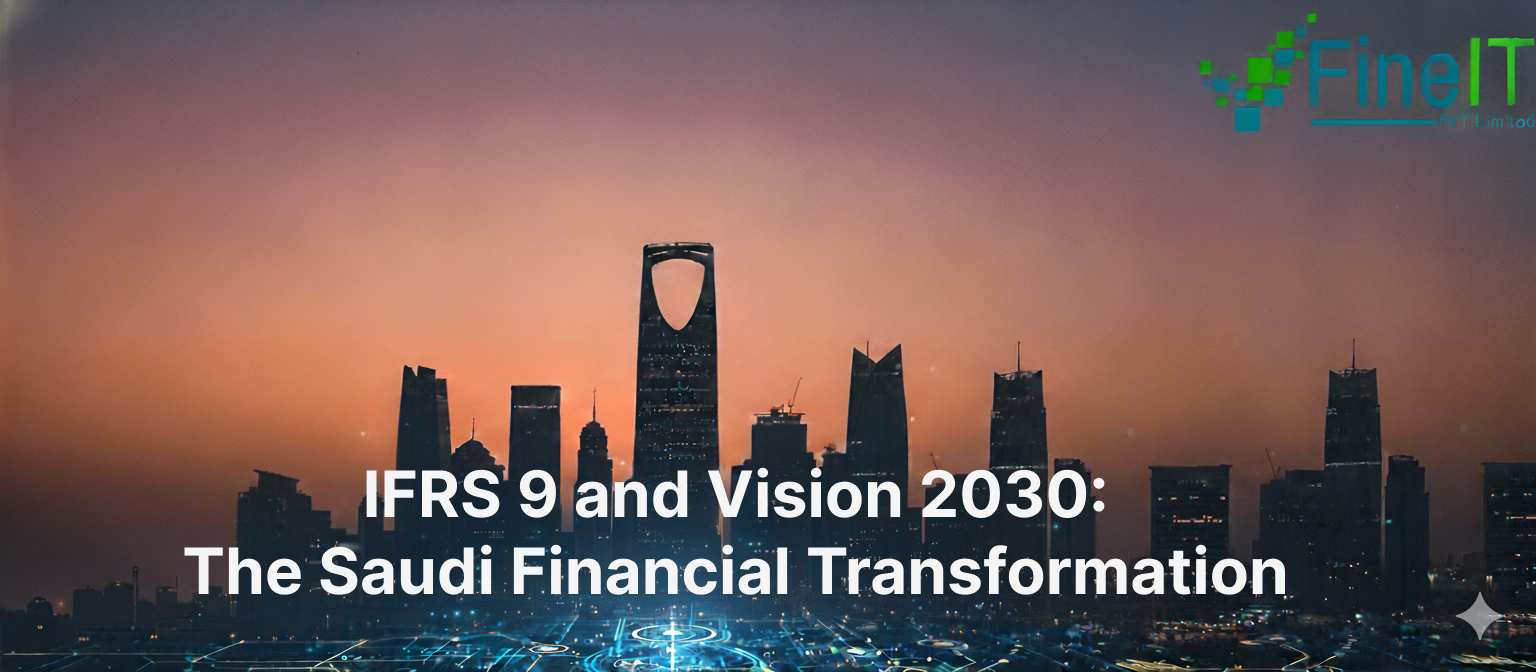The Kingdom of Saudi Arabia (KSA) is undergoing an unprecedented period of economic and social change, guided by the ambitious Saudi Vision 2030. This blueprint for the future seeks to diversify the economy, promote sustainability, and elevate the nation’s global standing.Integral to this transformation is a modern, robust, and transparent financial sector. At the heart of this financial evolution lies the adoption and implementation of IFRS 9 Financial Instruments, a global accounting standard that is fundamentally reshaping how Saudi banks and financial institutions operate.
IFRS 9: A Pillar of Prudence in the Financial Sector
IFRS 9, issued by the International Accounting Standards Board (IASB), replaced IAS 39 and brought about sweeping changes, most notably in the areas of classification and measurement, hedge accounting, and impairment.
The most profound shift is the introduction of the Expected Credit Loss (ECL) model for impairment. Under the old standard (IAS 39), banks recognized credit losses only when they had been incurred (a ‘wait-and-see’ approach). IFRS 9 mandates a forward-looking approach, requiring institutions to estimate and provision for losses expected over the entire life of a financial instrument from day one.
Key Impacts on Saudi Financial Institutions:
- Higher Provisions: The ECL model generally leads to earlier and often higher provisioning, strengthening balance sheets against future economic downturns.
- Data and Modelling Overhaul: Compliance necessitates sophisticated data aggregation, complex economic forecasting, and advanced statistical modelling capabilities to calculate ECLs across different scenarios.
- Enhanced Risk Management: By forcing banks to look ahead and incorporate macroeconomic factors (like oil prices, GDP growth, and unemployment rates) into loss calculations, IFRS 9 promotes superior risk management practices.
Vision 2030: Empowering a Diversified Economy
Saudi Vision 2030 is centered on three core themes: a vibrant society, a thriving economy, and an ambitious nation. The financial sector is a critical enabler of these goals, with specific objectives outlined in the Financial Sector Development Program (FSDP).
Financial Goals of Vision 2030:
- Diversification: Shifting the financial sector’s reliance from government spending to private sector and foreign investment.
- Capital Market Depth: Developing a more advanced and liquid capital market to finance economic growth projects.
- Transparency and Stability: Ensuring a high level of transparency, stability, and integrity in the financial system to attract international capital.
- Financing Growth: Enhancing the sector’s capacity to finance megaprojects (like NEOM and Red Sea Global) and support Small and Medium-sized Enterprises (SMEs).
The Synergy: IFRS 9 as an Enabler of Vision 2030:
The convergence of IFRS 9 and Vision 2030 is not coincidental; it represents a planned and powerful push towards modernization. IFRS 9 acts as a crucial regulatory foundation that supports the broader economic ambitions of the Kingdom.
- Attracting Foreign Investment: One of Vision 2030’s primary aims is to attract massive foreign direct investment. By adopting IFRS 9, Saudi Arabia’s financial reporting aligns with global best practices, particularly those in the EU and other major economies. This global comparability and commitment to transparency significantly boosts investor confidence, making the financial sector—and the Saudi market overall—more appealing to international capital.
- Strengthening Financial Stability: The forward-looking nature of the ECL model creates an early warning system for credit risk. This regulatory prudence strengthens the financial resilience of Saudi banks, which is essential for sustaining the long-term, multi-year projects under Vision 2030. A stable banking sector is better equipped to weather global economic shocks, ensuring uninterrupted financing for national development.
- Modernizing Risk Culture: The implementation challenge of IFRS 9 has spurred massive technological and human capital investment in Saudi financial institutions. Banks have had to integrate sophisticated data analytics and risk modelling into their core operations. This modernization creates a data-driven risk culture—a prerequisite for a thriving, cutting-edge financial hub envisioned by Vision 2030.
In essence, IFRS 9 provides the financial system with the necessary resilience and credibility to handle the high growth and inherent risks associated with an ambitious, transformational national strategy like Vision 2030.
Conclusion:
The journey towards Vision 2030 is a marathon, not a sprint, and its success hinges on building robust, internationally credible institutions. The mandatory adoption of IFRS 9 marks a decisive step in this direction, moving the Saudi financial landscape from a historical accounting perspective to a forward-looking, risk-aware model. By reinforcing financial stability and aligning reporting standards with the world’s leading economies, IFRS 9 is not just an accounting standard—it is a critical and successful component of The Saudi Financial Transformation.
At Fineit, we empower Saudi banks and financial institutions to meet the complex demands of IFRS 9 implementation and compliance. Our team of experts provides end-to-end solutions—ranging from ECL model development and validation to data integration, governance frameworks, and regulatory reporting alignment—tailored to the evolving requirements of the Saudi Arabian Monetary Authority (SAMA) and Vision 2030 objectives.
By partnering with Fineit, you can transform compliance into a strategic advantage, ensuring your organization’s financial resilience, transparency, and readiness for the future of Saudi finance.
Let’s build the future of finance together.
Contact us today to learn how Fineit can support your IFRS 9 journey in Saudi Arabia.



